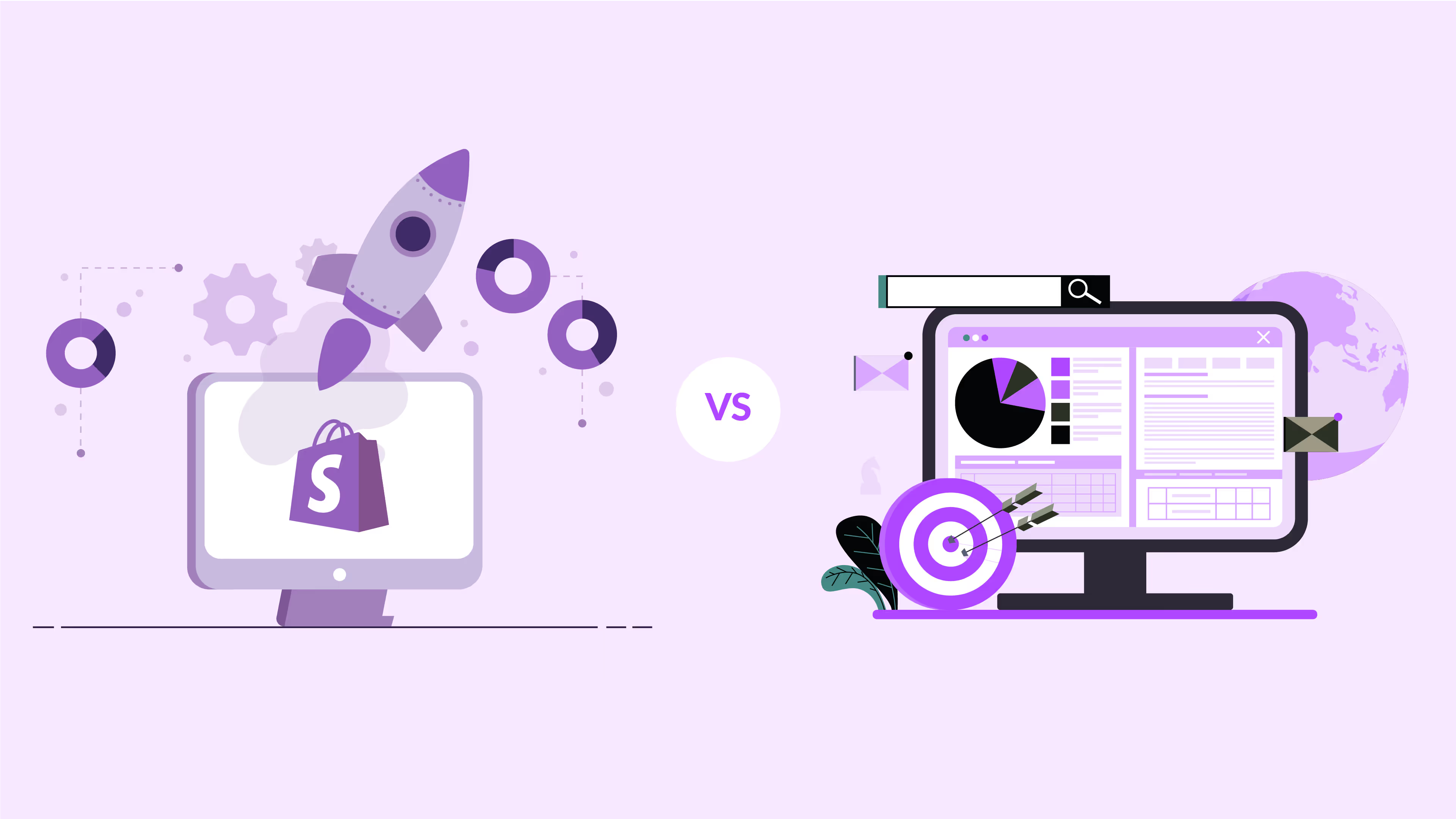Imagine you run a high-end, sustainably sourced jewelry brand on Shopify. You’ve built an elegant storefront, optimized your pages with the right keywords, and launched campaigns to attract clicks. The traffic starts coming in—but it’s powered mostly by continuous ad spend. Every new visitor needs a push, and with each campaign, you’re paying to bring them back.
Now, imagine if those same customers found your store organically—searching for exactly what you sell and landing directly on your product pages. That’s when growth becomes scalable and sustainable. This is where Shopify SEO changes the game, helping your brand attract the right audience naturally while gradually lowering your Customer Acquisition Cost (CAC).
Shopify SEO isn’t just traditional SEO applied to an online store—it’s — it’s an evolved practice designed for e-commerce. In this guide, you’ll explore how it differs from traditional SEO, why it matters, and how it can help you build a thriving store that grows beyond paid marketing.
In this guide, you’ll discover how Shopify SEO differs from traditional SEO, why this matters for your store’s growth, and how to use both methods to maximize your traffic and sales in 2025.
What Is Shopify SEO?
Shopify SEO builds on those traditional principles but pivots to address the unique ecommerce environment of Shopify stores—places where customers expect quick product discovery in multiple lnagauges and seamless transactions Unlike typical websites, Shopify stores depend heavily on the visibility and quality of thousands of individual product pages, each representing a SKU or variant. Shopify’s bulk product catalog system introduces specific challenges:
- Duplicate Content: Multiple collection and filtered URLs often point to the same product page, risking search engine penalties.
- Thin Product Descriptions: Many product pages use generic manufacturer descriptions, which don’t satisfy search engines or convince shoppers.
- Fixed URL Structures: Shopify constrains URL customization compared to traditional websites, limiting SEO flexibility.
- Shopify's Internal Search and Recommendations: Ranking factors here include user engagement, site speed, and reviews, beyond just keywords.
Shopify’s tremendous scale—over 4.6 million daily active users and 700 million customers—means you must not only get found on Google but also within Shopify’s ecosystem. That requires a specialized, product-focused SEO strategy.
Key Differences Between Shopify SEO and Traditional SEO
Traditional SEO focuses on broad visibility—informational blogs, service content, and brand-driven authority. Its goal is to attract users who are searching, learning, and comparing before they buy.
Shopify SEO, by contrast, focuses on conversion-ready traffic. It’s about optimizing product and collection pages to rank for transactional, purchase-driven keywords while maintaining technical excellence across thousands of URLs.
Shopify stores also depend far more on structured data and automation. Metadata often comes from templates, so optimization happens at scale, not line-by-line. And because most of Shopify’s traffic is mobile-first, the platform demands lightweight designs and fast page loads.
.avif)
How to Master Shopify SEO and Boost Conversions
To truly scale conversions through Shopify SEO, align your content with direct user intent. Product pages should target highly transactional keywords (e.g., “buy sustainable silver ring”), while collections should focus on comparative or commercial terms. Craft unique, buyer-focused product descriptions—highlighting benefits, materials, and features with natural keyword flow rather than relying on generic manufacturer copy.
Implement canonical tags within Shopify’s Liquid templates to resolve duplicate content issues from multi-collection listings. Add structured data (schema markup) to display prices, availability, and ratings in rich snippets for higher click-through rates.
Ensure your store is optimized for mobile-first performance, using WebP images, defined dimensions, and lightweight responsive themes to improve speed and clarity. Smooth internal navigation and simple link paths keep shoppers exploring with minimal clicks and help crawlers index efficiently.
Select SEO apps that automate metadata and image optimization without hurting site speed, and build backlinks through influencer partnerships, niche bloggers, or PR mentions to strengthen domain authority. Shopify SEO is all about balancing automation and personalization—focusing on accuracy, scale, and buyer experience.
A Balanced Strategy for Shopify SEO Success
Traditional SEO is a strong foundation, but Shopify SEO requires specialized focus on product volume, technical constraints, and a mobile-first, fast user experience.
Successful Shopify SEO requires mastering both traditional fundamentals and platform-specific strategies. It's about understanding that your customer journey is compressed, your content needs are different, and your technical constraints require creative solutions.
The brands winning in 2025 will be those that recognize these nuances and adapt accordingly. Whether you're handling SEO in-house or considering advanced solutions like Yarnit's agentic AI offerings for comprehensive Shopify optimization, the key is treating your ecommerce SEO as its own discipline.
If you’re ready to evolve your Shopify SEO, Yarnit offers a complete, data-driven solution. Our platform goes beyond standard automation—integrating directly with Shopify and PIMs to generate dynamic, performance-backed PDPs. We use bestseller insights, Google Shopping data, and third-party APIs to enhance page content while continuously tracking market trends. Our proprietary framework monitors product performance and recommends real-time content updates automatically—humans only approve, not rewrite.
With Yarnit, your product pages don’t just rank—they evolve intelligently as the market shifts, keeping your brand visible and relevant without exhausting your ad budget.
Don't let platform-specific challenges hold back your brand's potential. Master these Shopify-specific tactics, stay ahead of emerging trends, and watch your search visibility—and sales—soar in 2025.
FAQs
Q1: How does Shopify SEO differ from traditional SEO?
Shopify SEO focuses more on thousands of product pages within fixed URL constraints, managing duplicate content, and optimizing for Shopify's internal search algorithms and mobile-first users.
Q2: Can traditional SEO principles apply to Shopify SEO?
Yes, but they must be adapted to Shopify’s platform-specific technical and audience demands.
Q3: What are the biggest Shopify SEO challenges?
Duplicated product URLs, generic product descriptions, mobile speed issues, and limited URL customization.
Q4: What future Shopify SEO trends should marketers watch?
Voice search, AI content personalization, programmatic SEO, and mobile-first indexing.









